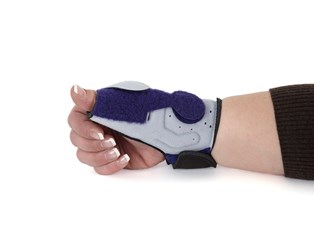Carpal tunnel syndrome is a fairly common injury, and its causes are often easily traced. Anyone who puts repeated, continuous strain on his or her wrists is at risk of developing carpal tunnel syndrome. Not only that, but some people are simply more prone to developing the symptoms of this syndrome without excessive strain or stress. While it is more difficult to find the primary causes of the ailment when the person is simply prone to the condition, it is still typically quite easy to identify activities that worsen symptoms.
What is the carpal tunnel?
Carpal tunnel syndrome derives its name from a small opening in the wrist. Through this small opening, several tendons and the median nerve control motor function of the thumb, index finger, middle finger and ring finger.
This carpal tunnel only has so much available space to house the tendons and nerve. Through continuous activity, an inflammatory response occurs naturally in the tendons. As inflammation increases, it is far more likely that the tunnel will push back on the tendons as they expand. This causes increased pressure on the median nerve, and the bone that forms the tunnel can also wear away the tissue of the tendons.
What activity causes carpal tunnel syndrome?
The most common cause of carpal tunnel syndrome is undoubtedly repetitive strain. Repetitive strain is caused by tasks and activities that continuously require engagement of the muscles that revolve around the motor movements of the wrist. As with any muscle in the body, continuous activity causes miniature tears in the muscle tissue. As this tearing increases, the body pumps more blood to the affected area, as part of the healing process.
Causes can easily be found in activities that require continuous use of the hands. Activities such as typing, writing, playing a musical instrument, working with power tools, painting for long periods of time, and other wrist-intensive activities are most often the main culprit behind the excessive inflammation. However, it is possible for compound issues to arise in the neck, back, shoulder, elbow, and muscles in the arm that either give way to or exacerbate the symptoms of carpal tunnel syndrome.
How is carpal tunnel syndrome treated?
Treatment of most cases of this injury is simple. One of the best remedies available is to take longer rest periods during activities that engage the wrist. However, this can be difficult when using the wrist is part of work or an otherwise necessary task. In these cases, anti-inflammatory drugs such as ibuprofen and NSAIDs can be used to rapidly reduce some of the pressure within the carpal tunnel.
In addition to rest and medication, icing the areas around the hand, wrist, and forearm is an excellent remedy, but it should also be noted that direct application of ice to skin is extremely inadvisable, as this can cause long-term damage. Simply wrapping an ice pack in a cloth, shirt, or hand towel can greatly reduce the risk of over-icing. Aside from that, resting the hand at elevations slightly higher than the position of the heart can reduce the amount of blood flow and subsequently reduce inflammation.
How can carpal tunnel syndrome be prevented?
The best medicine for carpal tunnel syndrome is prevention. Taking active steps to guard against this condition is necessary for those who use their wrists daily. Always be cautious of the amount of strain being placed on the muscles, and be sure to give your wrists plenty of time to recover from demanding activities.



